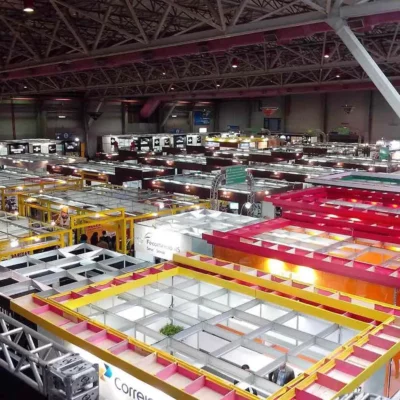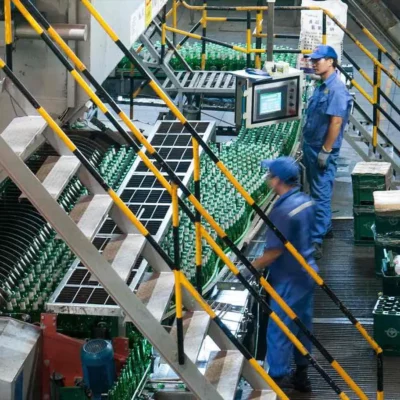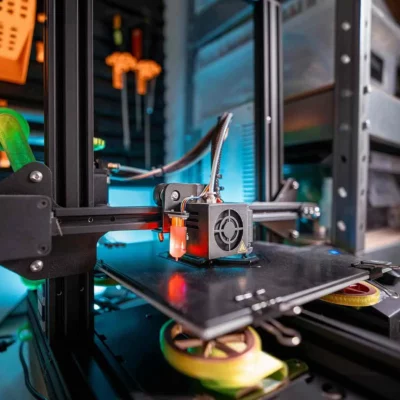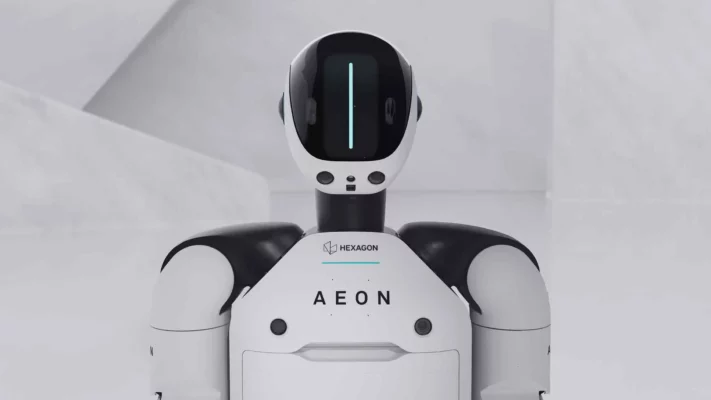Plug-and-play solutions in automation are built to simplify your manufacturing processes by delivering complete, ready-to-use systems. They cover every step of production, from material handling to quality control, making it easier for you to increase efficiency and reduce downtime. As we are about to head into 2025, plug-and-play solutions are evolving to meet the rising demands for speed, flexibility, and cost-effectiveness in manufacturing.
When you invest in a plug-and-play solutions , you’re not just buying equipment. You’re getting a fully integrated solution that’s designed, set up, and maintained by a single trusted vendor. This lets you focus on your operations, while experts handle the complex setup, integration, and support you need.
What Are Plug-and-Play Solutions in Industrial Automation?
Plug-and-Play solutions—also called end-to-end systems, all-in-one setups, turnkey robot solutions, or fully integrated solutions—are automation systems designed to be ready for immediate use. They come pre-built and tested, covering essential tasks like material handling, quality inspection, and packaging, making it easier for you to streamline your production line. Because plug-and-play solutions are delivered as complete packages, they reduce the time and complexity of installation.
Simplify Your Project with a Single-Vendor Solution:
With plug-and-play solutions, you work with one trusted vendor from start to finish. This single-vendor approach simplifies the integration process and cuts down on potential risks. You don’t need to juggle multiple providers or worry about compatibility issues. Instead, you receive a customized, fully operational solution that’s set up and supported by experts. This way, you can focus on production while your vendor handles the complex details, ensuring that your system is up and running smoothly from day one
Understanding the Cost of Plug-and-Play Automation Solutions:
The cost of a plug-and-play automation solution depends on how complex your project is. Generally, these costs cover everything from planning and design to installation, setup, and maintenance. To help you budget, here’s a breakdown of typical cost ranges for plug-and-play solutions:
1. Small Projects:
Expect to invest between $50,000 and $200,000. These are often simpler systems, like basic assembly or inspection solutions. Small projects are ideal if you need to automate one specific task without heavy customization.
2. Medium Projects:
Costs for these projects range from $200,000 to $500,000. This level might include more advanced applications like robotic integration or material handling. If you’re aiming to automate several processes on your production line, a medium project may be the right fit for you.
3. Large Projects:
Large-scale projects generally start at $500,000 and go up. These are highly customized solutions designed for complex, multi-process operations. Large projects are best if your operations require advanced, multi-stage automation setups.
While plug-and-play solutions come with a higher upfront cost, they often pay off significantly over time. By reducing labor, energy consumption, and downtime, these systems can offer substantial ROI. Plus, you’ll see long-term savings as they optimize productivity and minimize ongoing operational costs. Investing in plug-and-play automation solutions helps you boost efficiency, lower expenses, and make the most of your production capacity
To learn more about calculating ROI:
Key Applications of Plug-and-Play Solutions in 2025:
Plug-and-play solutions offer targeted automation across industries, improving efficiency and precision in specific applications. Here’s how they can make a difference in your operations:
Material Handling & Logistics:
If you’re looking to streamline your supply chain, plug-and-play solutions can automate palletizing, depalletizing, and sorting. These systems increase accuracy, speed up handling, and reduce the need for manual labor in your warehousing and logistics operations.
Assembly & Production:
For tasks like robotic welding, high-precision assembly, and packaging, plug-and-play solutions provide the consistency and speed you need. This is especially valuable in the automotive and electronics industries, where precision is crucial for large-scale production. By automating these labor-intensive tasks, you can boost productivity and cut down on errors.
Inspection & Quality Control:
Integrating vision systems and sensors into plug-and-play setups allows you to monitor quality in real-time. These systems can help you maintain high standards, catch defects early, and reduce rework. Real-time inspection is vital for ensuring that your products meet exact specifications before they move on to the next phase of production.
Food & Beverage Processing:
In food and beverage production, plug-and-play solutions offer hygienic handling, sorting, and packaging designed to meet strict industry regulations. These systems adapt easily to different types of food products and packaging formats, allowing you to process items safely and efficiently.
Healthcare & Pharmaceuticals:
For sensitive tasks like dispensing, packaging, and even surgical assistance, plug-and-play solutions provide custom-built, sterile environments. These systems ensure precision while meeting the stringent regulatory requirements of healthcare and pharmaceutical applications, making them ideal for high-stakes environments where accuracy is essential.
Plug-and-play solutions can be customized for different production environments, from cleanrooms to high-heat areas. This adaptability makes them a valuable addition across industries, allowing you to meet specific operational needs and improve overall performance.
Need Free Advice For Your Robot Project?
Advantages of Plug-and-Play Solutions:
1. Reduced Lead Times:
Plug-and-play solutions can speed up your installation timelines. Thanks to modular designs and pre-built components, these systems are often ready much faster—sometimes by 50%—compared to custom-built systems. This quick setup minimizes downtime and gets you closer to production sooner.
2. Enhanced Consistency & Quality:
Plug-and-play systems allow you to keep your quality consistent. By automating repetitive tasks, you reduce the chances of human error, which means less rework and fewer material losses. You’ll get a steady output that meets your exact specifications, time after time.
3. Labor Optimization:
These solutions are designed to operate with minimal manual input. Once they’re up and running, your team only needs to oversee the process rather than handle each task directly. This reduces your labor costs and allows your staff to focus on more valuable tasks, boosting overall efficiency.
4. Scalability & Flexibility:
Many plug-and-play systems are modular, so you can adjust them as your production needs change. Whether you’re adding new products or scaling up, plug-and-play solutions adapt easily, giving you flexibility without the need for major reconfigurations.
How to Choose the Right Plug-and-Play Solution for Your Application:
Define Your Automation Needs:
Start by clarifying what you want to achieve with automation. Are you aiming to speed up production, improve quality control, or lower labor costs? Define these goals clearly. Once you know what you need, focus on the specific technical requirements—such as speed, precision, and size—that will support those goals directly.
Consider Your Vendor Options: Single-Vendor vs. Multi-Vendor:
Choosing a single vendor means one company handles everything, from design to installation, which simplifies the setup and reduces risk. This approach can make project management easier and lower your overall costs. A multi-vendor solution, on the other hand, gives you more control over each component by allowing you to choose specialized providers, but it can lead to higher costs and more complex coordination.
Plan & Scope the Project:
Before selecting a vendor, take the time to scope and plan your project thoroughly. Discuss your needs, set a clear budget, and establish a timeline. Proper planning ensures the solution aligns with your production goals and can handle any future changes or expansions.
Think About Training & Maintenance:
Make sure your team gets the training they need to operate the new system efficiently. Choose a vendor that offers ongoing maintenance and potential upgrades, which will help extend the solution’s life and adapt it to future production demands.
Looking for your automation solution? Check out the best!
Conclusion:
Plug-and-play solutions give you a complete way to simplify your production process, cut down on manual labor, and boost efficiency. These systems cover a wide range of tasks, from material handling to precise quality inspection, and can be customized to fit your specific needs. Choosing the right turnkey solution means planning carefully, selecting a trusted vendor, and ensuring your team is trained and prepared. While there’s an upfront cost, the long-term benefits—such as less downtime, lower labor expenses, and higher productivity—make it a valuable investment. With plug-and-play automation solutions, you’re setting up a reliable, scalable way to enhance your operations.







Hey there! I just wanted to give you a big thumbs up for the excellent information you’ve provided in this post. I’ll be returning to your website for more soon!